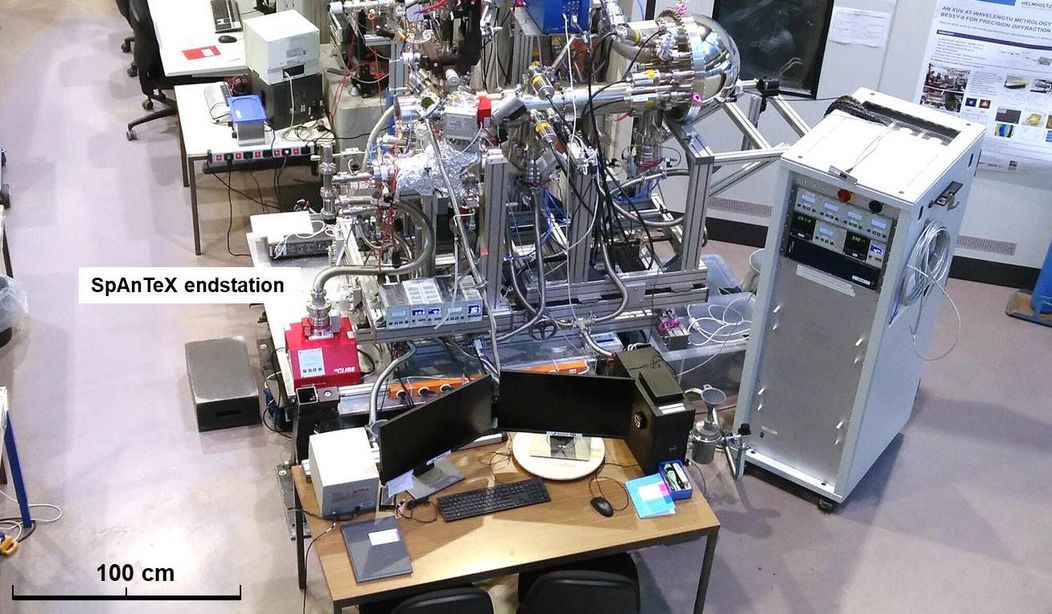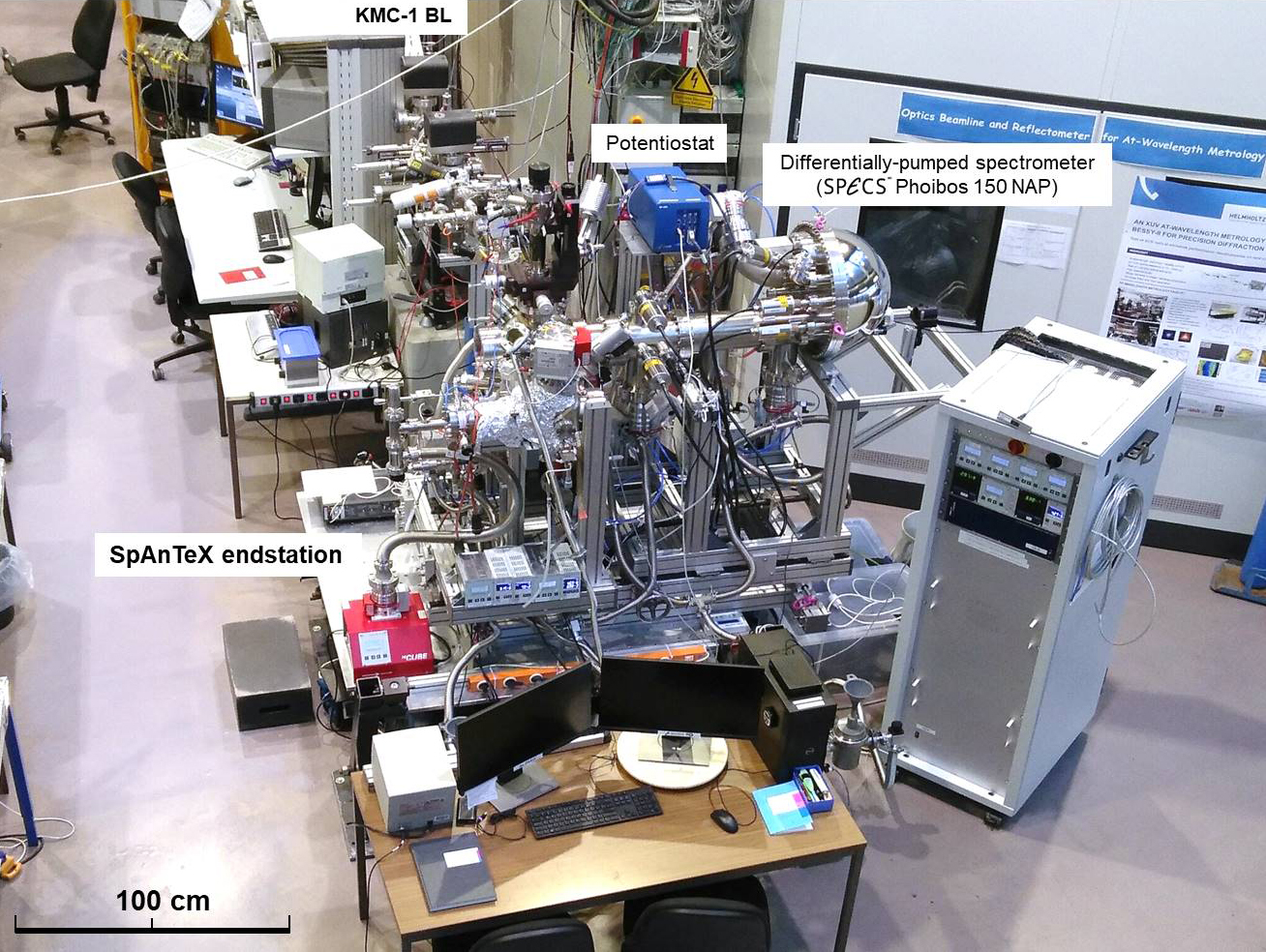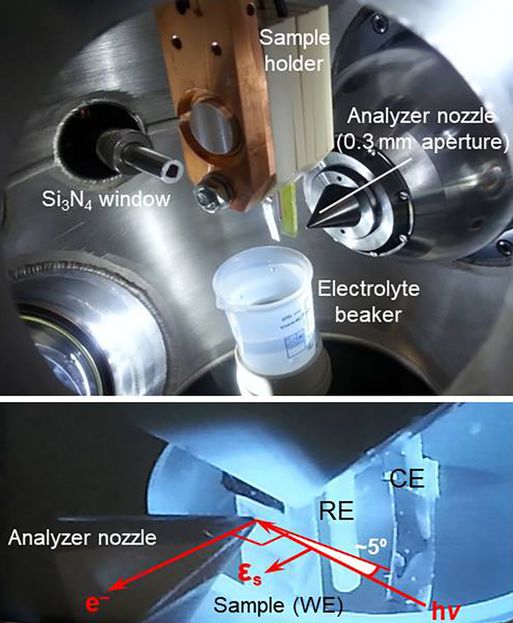The SpAnTeX (Spectroscopic Analysis with Tender X-Rays) endstation installed at the KMC-1 beamline at the BESSY II synchrotron in Berlin has been recently opened for user operation. The experimental station was designed and built up by the group of Dr. David Starr and Dr. Marco Favaro, for cutting-edge NAP-HAXPES investigations of liquid-solid, liquid-vapor interfaces, and bulk liquids samples in the energy range between 2 and 10 keV.
The end-station has a differentially pumped PHOIBOS 150 NAP HV (10 keV) hemispherical electron analyzer with a 2D-DLD detector and contains two separate modules mounted on independent frames: the “Dip and Pull” module and the “Droplet Train” module. The analyzer stays fixed at the beamline, while the separate modules can be easily inter-exchanged for utmost flexibility and versatility. The frames of the modules and end-station also allow module exchange with the ISSIS (Innovative Station for In Situ Spectroscopy), CAT@EMIL, and BElChem-PGM experimental end-stations at BESSY II.
Dip and Pull Module
The “Dip and Pull” module allows for in-situ and operando study of electrochemical processes at liquid-solid interfaces, i.e. the interface between an electrode and electrolyte. It contains a manipulator where a working electrode WE, counter electrode CE, reference electrode RE are mounted. The electrodes are dipped into an electrolyte filled beaker and a potentiostat delivers the voltages to drive the electrochemical cell. In order to minimize liquid evaporation, an additional “buffer beaker” is placed inside the chamber. During the experiments the manipulator with the electrodes is dipped into the electrolyte and partially pulled back so that a thin film of electrolyte is formed on the working electrode. The electrolyte film is thick enough to enable electrochemical processes, while at the same time being thin enough for carrying out XPS measurements of the working electrode through the liquid.
Droplet Train Module
The “Droplet Train” module is designed for NAP-HAXPES measurements of liquid/vapor interfaces, “bulk” liquid solutions as well as nanoparticles in solution. The droplets are generated using flow-focusing where a gas flow through a small orifice is used to produce a narrow liquid jet. Vibrating this jet with a piezo ring causes the jet to break-up into a stable and uniform liquid droplet train. Depending on the type of liquid, flow rate as well as the pressure difference across the flow-focusing orifice, droplet trains with droplet diameters ranging from 150 – 250 µm and variable droplet spacing can be produced. The delay-line-detector allows measurements to be made directly on the liquid droplet (0° phase) as well as in-between two different droplets (180° phase, gas phase only), for a clear distinction between liquid and gas phase XPS signals.
We congratulate the scientists at SpAnTeX endstation and wish them many exceptional results with this innovative and utmost versatile experimental set-up.




